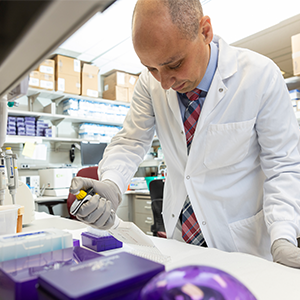-

Surgery Often the Solution for Gallstone Attack
ROCHESTER, Minn. — October 22, 2012. Gallstones are common and for most people don't cause problems. But when they result in painful symptoms, gallbladder removal surgery often is recommended, according to the October issue of Mayo Clinic Health Letter.

The gallbladder is a small, pear-shaped sac tucked under the liver on the right side of the upper abdomen. It's a reservoir for bile, which is produced in the liver. When a person consumes foods containing protein or fat, the gallbladder contracts and empties the bile it contains through bile ducts into the small intestine. If the bile becomes chemically imbalanced, it forms into hardened particles — gallstones. They usually settle harmlessly in the bottom of the gallbladder. About 10 to 15 percent of people in the United States have gallstones, and 75 percent of them don't experience symptoms or require treatment.
But sometimes, gallstones block the outlet of the gallbladder. This causes a gallbladder attack, with sudden moderate to severe pain in the upper right abdomen, between the shoulder blades and under the right shoulder. Gallstones usually drop back down into the gallbladder, ending the attack. Or, the stone can slip farther down the bile duct and not dislodge. Additional symptoms might include high fever and chills, yellowing of the skin and whites of the eyes, dark-colored urine, and pale colored stools. These symptoms warrant immediate medical attention. In some cases, gallbladder attacks can lead to life-threatening complications.
When pain or other symptoms occur, about 70 percent of the time they will reoccur within two years. That's why doctors typically recommend surgery to remove the organ after one or two attacks. The gallbladder is not an essential organ, and new stones usually form if the stones are removed or dissolved with medication.
After gallbladder removal, the liver still produces enough bile to digest food from a normal diet. Instead of being stored in the gallbladder, bile flows out of the liver and empties into the small intestine. After surgery, people may experience a greater number of bowel movements and stools may be softer. Often, these changes are temporary.
Mayo Clinic Health Letter is an eight-page monthly newsletter of reliable, accurate and practical information on today's health and medical news. To subscribe, please call 800-333-9037 (toll-free), extension 9771, or visit Mayo Clinic Health Letter Online.
###
About Mayo Clinic:
Recognizing 150 years of serving humanity in 2014, Mayo Clinic is a nonprofit worldwide leader in medical care, research and education for people from all walks of life. For more information, visit 150years.mayoclinic.org, www.mayoclinic.org and newsnetwork.mayoclinic.org.
Media Contact: Ginger Plumbo, 507-284-5005 (days), newsbureau@mayo.edu







